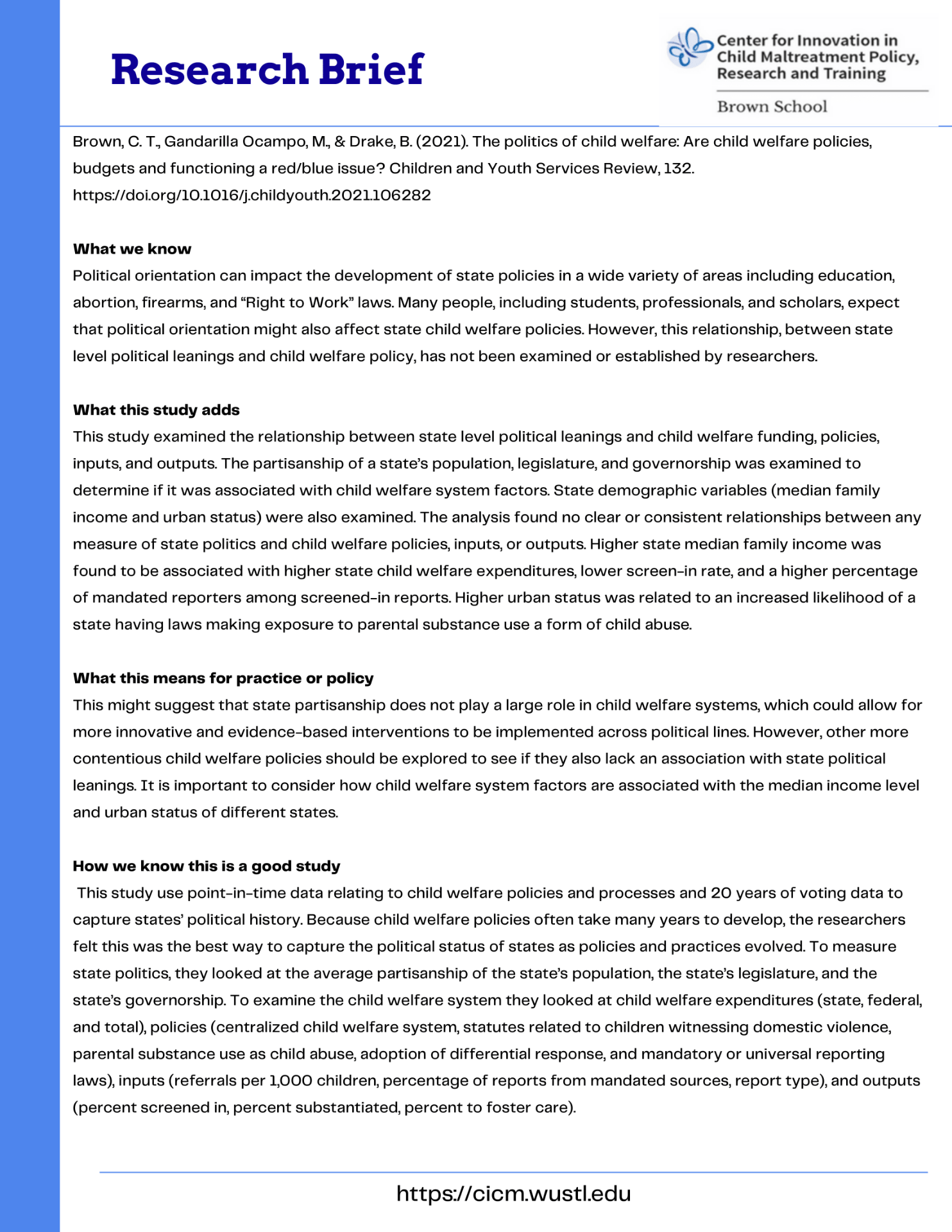The politics of child welfare
Research Brief

Brown, C. T., Gandarilla Ocampo, M., & Drake, B. (2021). The politics of child welfare: Are child welfare policies, budgets and functioning a red/blue issue? Children and Youth Services Review, 132.
What we know
Political orientation can impact the development of state policies in a wide variety of areas including education, abortion, firearms, and “Right to Work” laws. Many people, including students, professionals, and scholars, expect that political orientation might also affect state child welfare policies. However, this relationship, between state level political leanings and child welfare policy, has not been examined or established by researchers.
What this study adds
This study examined the relationship between state level political leanings and child welfare funding, policies, inputs, and outputs. The partisanship of a state’s population, legislature, and governorship was examined to determine if it was associated with child welfare system factors. State demographic variables (median family income and urban status) were also examined. The analysis found no clear or consistent relationships between any measure of state politics and child welfare policies, inputs, or outputs. Higher state median family income was found to be associated with higher state child welfare expenditures, lower screen-in rate, and a higher percentage of mandated reporters among screened-in reports. Higher urban status was related to an increased likelihood of a state having laws making exposure to parental substance use a form of child abuse.
What this means for practice or policy
This might suggest that state partisanship does not play a large role in child welfare systems, which could allow for more innovative and evidence-based interventions to be implemented across political lines. However, other more contentious child welfare policies should be explored to see if they also lack an association with state political leanings. It is important to consider how child welfare system factors are associated with the median income level and urban status of different states.
How we know this is a good study
This study used point-in-time data relating to child welfare policies and processes and 20 years of voting data to capture states’ political history. Because child welfare policies often take many years to develop, the researchers felt this was the best way to capture the political status of states as policies and practices evolved. To measure state politics, they looked at the average partisanship of the state’s population, the state’s legislature, and the state’s governorship. To examine the child welfare system they looked at child welfare expenditures (state, federal, and total), policies (centralized child welfare system, statutes related to children witnessing domestic violence, parental substance use as child abuse, adoption of differential response, and mandatory or universal reporting laws), inputs (referrals per 1,000 children, percentage of reports from mandated sources, report type), and outputs (percent screened in, percent substantiated, percent to foster care).